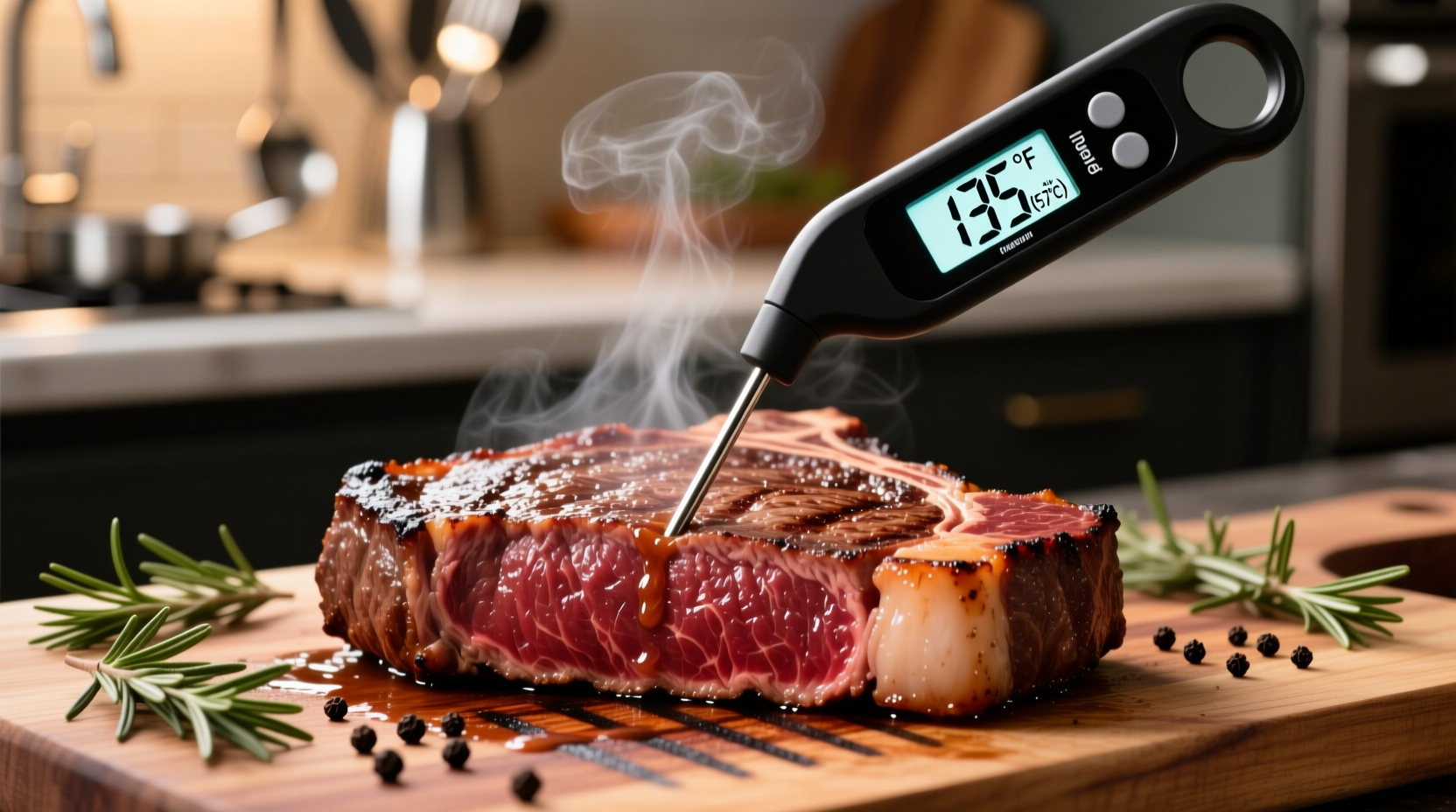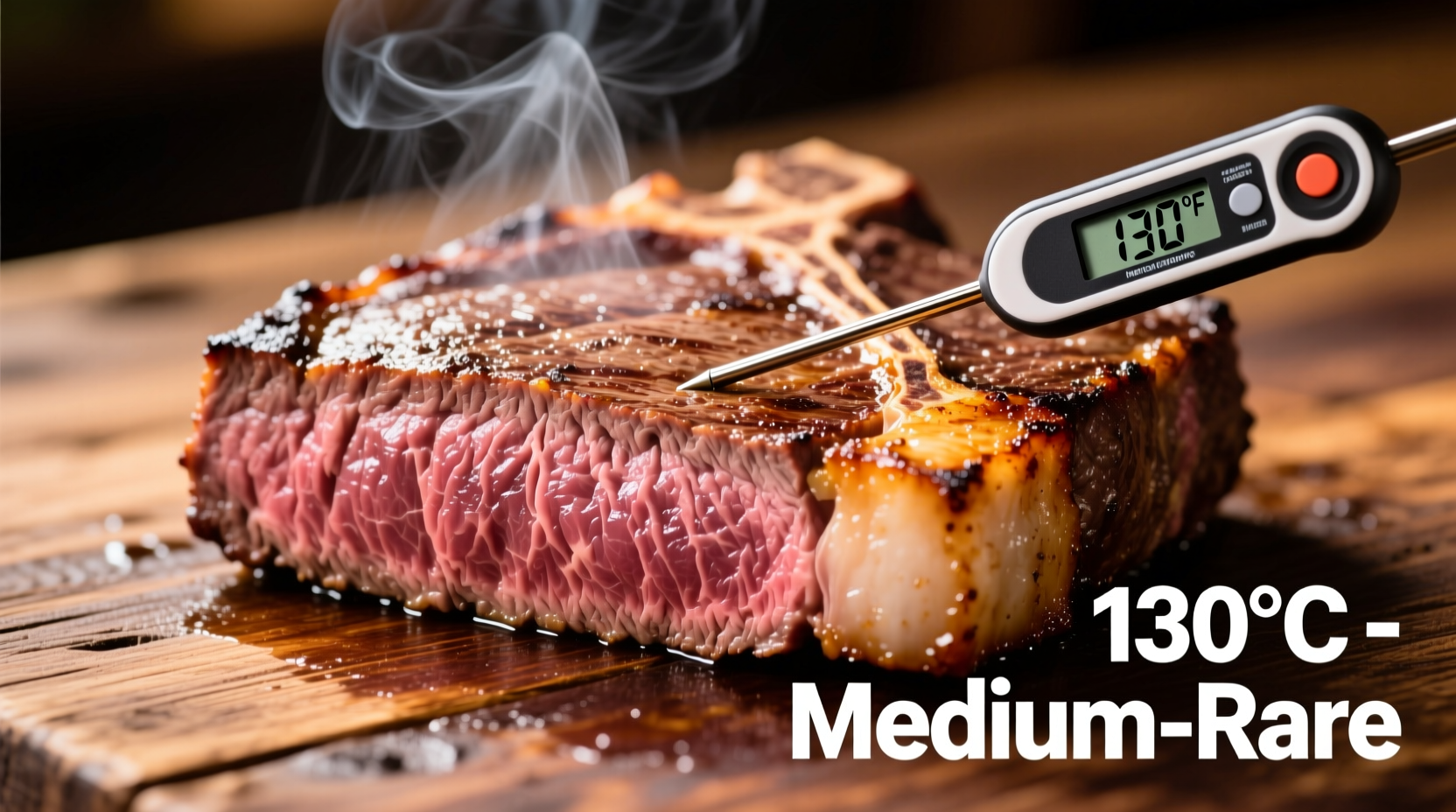The USDA recommends cooking whole cuts of beef to a minimum internal temperature of 145°F (63°C) with a 3-minute rest time for safety, while ground beef must reach 160°F (71°C). These temperatures destroy harmful bacteria like E. coli while preserving optimal flavor and texture.
Getting beef temperature right isn't just about preference—it's a critical food safety issue. Undercooked beef can harbor dangerous pathogens that cause foodborne illness, affecting over 48 million Americans annually according to the CDC. As a home cook, understanding precise temperature requirements ensures both safety and culinary success.
Why Temperature Matters More Than Color
Many home cooks rely on visual cues like meat color to determine doneness, but this method is dangerously unreliable. The USDA's Food Safety and Inspection Service confirms that color alone cannot indicate whether beef has reached a safe temperature. Only an accurate meat thermometer provides the certainty needed to prevent foodborne illness while achieving your desired doneness.
| Beef Type | Rare | Medium-Rare | Medium | Medium-Well | Well-Done |
|---|---|---|---|---|---|
| Steaks & Roasts (whole muscle) | 120-125°F (49-52°C) |
130-135°F (54-57°C) |
140-145°F (60-63°C) |
150-155°F (66-68°C) |
160°F+ (71°C+) |
| Ground Beef | 160°F (71°C) minimum - no rare/medium options | ||||
| Leftover Cooked Beef | 165°F (74°C) when reheating | ||||
Note: All whole muscle cuts require a 3-minute rest period after removal from heat, during which temperature typically rises 5-10°F (3-6°C).
The Science Behind Safe Beef Temperatures
Understanding why specific temperatures matter helps you make informed cooking decisions. Pathogens like E. coli O157:H7, which can cause severe illness, are destroyed at 160°F—but the USDA established 145°F as the minimum for whole cuts because:
- Whole muscle cuts have bacteria only on the surface, which is destroyed during searing
- Resting time after cooking allows residual heat to eliminate surface pathogens
- Ground beef requires higher temperatures because surface bacteria get distributed throughout
The FDA Food Code, followed by professional kitchens nationwide, aligns with these USDA standards. This consistency across authoritative sources confirms the reliability of these temperature guidelines.
Choosing and Using Your Meat Thermometer
Not all thermometers deliver restaurant-quality accuracy. For precise beef temperature readings:
- Select the right type: Instant-read digital thermometers provide the fastest, most accurate readings (within ±0.5°F)
- Calibrate regularly: Test in ice water (should read 32°F/0°C) or boiling water (212°F/100°C at sea level)
- Insert correctly: Place in the thickest part of meat, avoiding bone, fat, or gristle
- Check multiple spots: Especially for larger cuts, verify temperature in several locations

Special Considerations for Different Cooking Methods
While the target temperatures remain consistent, different cooking techniques require specific approaches:
Grilling and Pan-Searing
These high-heat methods create beautiful crusts while cooking the interior. For best results:
- Start with room-temperature meat (take from refrigerator 30-60 minutes before cooking)
- Use a two-zone fire on the grill for better temperature control
- Remove meat 5°F below target temperature to account for carryover cooking
Sous Vide Precision Cooking
Water bath cooking allows unprecedented temperature control:
- Set bath to exact desired final temperature (e.g., 130°F for medium-rare)
- Cook for recommended time based on thickness (1-4 hours)
- Finish with a quick sear to develop crust
Slow Cooking and Roasting
For tougher cuts like chuck roast or brisket:
- Target higher temperatures (195-205°F) to break down connective tissue
- Use a leave-in probe thermometer for continuous monitoring
- Don't rely on time alone—texture and probe tenderness matter more than specific temperature
Avoiding Common Temperature Mistakes
Even experienced cooks make these temperature-related errors:
- Mistake: Testing temperature too early
Solution: Wait until the final third of estimated cooking time - Mistake: Not accounting for carryover cooking
Solution: Remove meat 5-10°F below target temperature - Mistake: Placing thermometer near bone or fat
Solution: Insert into center of muscle tissue - Mistake: Not cleaning thermometer between readings
Solution: Wipe probe with hot, soapy water between checks
When Guidelines Don't Apply: Special Cases
Certain beef preparations follow different safety protocols:
- Pre-seared steaks: Restaurants sometimes sear first, then finish in oven—temperature guidelines remain the same
- Dry-aged beef: The aging process reduces surface bacteria risk, but internal temperatures should still meet standard guidelines
- Beef tartare: Raw beef carries inherent risks—only use recently butchered, high-quality beef handled with extreme care
For immunocompromised individuals, pregnant women, young children, and older adults, following the USDA's minimum temperature guidelines is particularly important. The CDC reports that these groups experience more severe outcomes from foodborne illnesses.
Mastering Beef Temperature for Perfect Results
Understanding beef temperature guidelines transforms your cooking from guesswork to precision. By following the USDA's science-based recommendations while accounting for your preferred doneness, you ensure both safety and culinary excellence. Remember that a reliable thermometer is your most valuable kitchen tool for achieving consistent results—invest in a quality model and make temperature checking part of your standard cooking routine.











 浙公网安备
33010002000092号
浙公网安备
33010002000092号 浙B2-20120091-4
浙B2-20120091-4